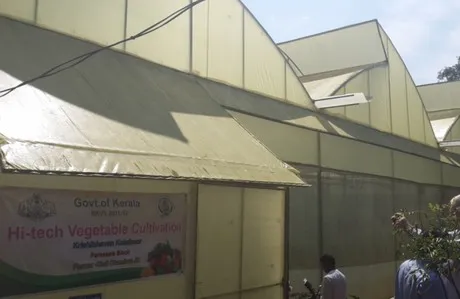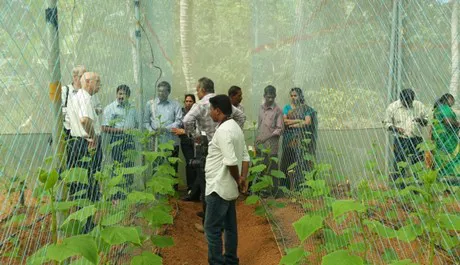To do this, the NAFTC drafted atentative tree year plan. On the 20th ofNovember they will held two sessions about the market opportunities in Chinaand India, open for every Dutch company that’s active in horticulture andfloriculture. “The purpose of the gathering is to exchange thoughts with thecompanies about the current market opportunities and to determine how thesecompanies can form a cluster to position themselves on the target markets,” says Marijn Leijten, director ofNAFTC-India.
The NAFTC first started inChina in 2008 and in 2011 they opened an office in India. “We’re a public-privatepartnership. We are not for profit (cost structure), we receive some fundingfrom the Dutch government, whereas the majority of our budget is coming frommember fees” explains Marijn. “Our strength lies in being locally active inIndia and China. We can bring companies together, coach them in theircooperation and help them to make good arrangements.” This is important due to culturaldifferences and the enormous sizes of countries. “For example, Dutch companies see acontract as the end of the negotiations, while Indian companies often see acontract as the beginning of the cooperation. Being aware of these kind of differences,we can be a good consultant to both companies.”

Post harvest losses
India is the second biggest producerof horticultural products, yet they lose about 30 to 40 percent of the productsin the post harvest process. “In India they try solving this problem by just buildinga lot of new cool stores, but the actual source of the problem is often preharvest related. Emphasis should be made on finding the correct variety at the start of the chain, along with implementing good agricultural practices etc. This kind of chain approach is very common in TheNetherlands, but often new in Indian value chains. It enables us the positionthe various chain components under one Dutch collective cluster.”
Since a couple of years, India is experiencingthe advantages of this holistic approach, simultaneously resulting in an increaseof protected cultivation. “There’s still a lot of open field production inIndia, but covered cultivation is a fast growing market. The country is alreadyexporting a lot of its produce, yet the products are shipped to the so called‘least developed countries’. Often this is because the quality of the productsdoesn’t meet the European standards yet. The experience that greenhouses canoffer a stable climate and that it leads to more consistent quality and yields, resulted in the fact that some of the Indian states already offer 70 percent subsidyon the construction costs of a greenhouse.”

Big retailers
Also major international retailers seeopportunities in the Asian country. “Two years ago, India made a huge step by easingthe requirements of Foreign Direct Investment in the retail sector. Nowretailers like Tesco, Carrefour and Wallmark are positioning themselves in themarket. The retailers are still very careful because they still have to embarkwith an important Indian partner and there are some tax treaties that aren’t alwaysvery advantageous to the foreign investors. Yet, we see a development. Inaddition, fully Indian owned retailers are investing tremendously in thesupermarket concept, in order to tap into the opportunities the new Indianmiddle class offers.”
Another general development is thatthe Indian market is increasingly looking for a constant demand and safelyproduced food; something that the Dutch horticultural industry can provide. To beable to showcase the Dutch expertise, it could be interesting to develop a demoproject. “In 2012 the Dutch and Indian governments signed a collaboration todevelop Indo-Dutch Centers of Excellence. Currently two are focused on horticulture, but in thefuture it’s the intention to build a more of these kind of demo greenhouse, whichenables Dutch companies to demonstrate their technologies and innovations inIndia.”
To learn more about the Indian andChinese market opportunities for your company and to give input on the threeyear collective horticulture program, register for the free sessions of NAFTCon the 20th of November 2014.
Click here for the complete invitation on the sessions.To register for the free sessions, click here.
![]() For more information, comments or questions
For more information, comments or questions
NAFTC
Marijn Leijten
marijn@naftc-india.com
www.naftc.nl
